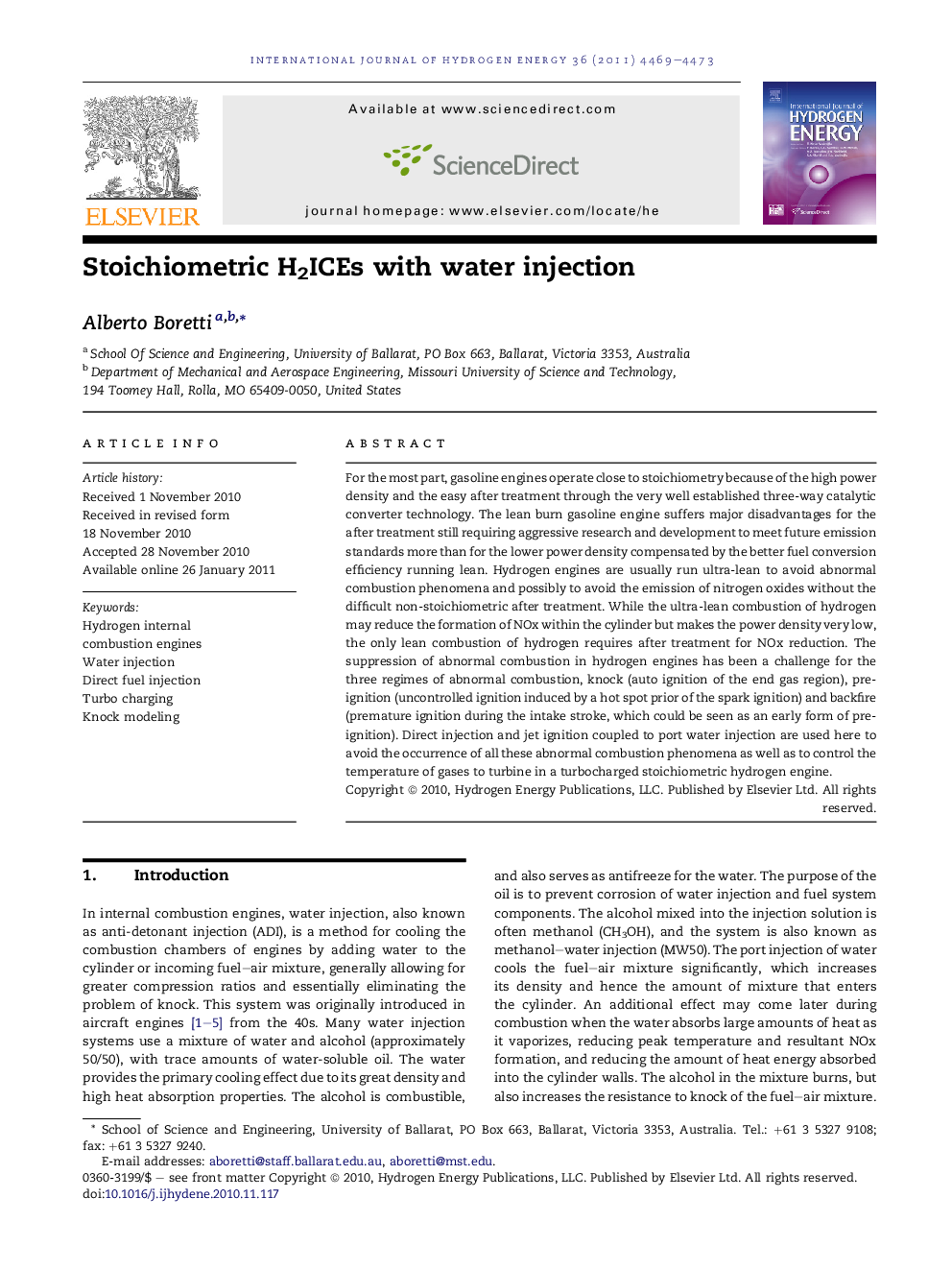| Article ID | Journal | Published Year | Pages | File Type |
|---|---|---|---|---|
| 1276235 | International Journal of Hydrogen Energy | 2011 | 5 Pages |
For the most part, gasoline engines operate close to stoichiometry because of the high power density and the easy after treatment through the very well established three-way catalytic converter technology. The lean burn gasoline engine suffers major disadvantages for the after treatment still requiring aggressive research and development to meet future emission standards more than for the lower power density compensated by the better fuel conversion efficiency running lean. Hydrogen engines are usually run ultra-lean to avoid abnormal combustion phenomena and possibly to avoid the emission of nitrogen oxides without the difficult non-stoichiometric after treatment. While the ultra-lean combustion of hydrogen may reduce the formation of NOx within the cylinder but makes the power density very low, the only lean combustion of hydrogen requires after treatment for NOx reduction. The suppression of abnormal combustion in hydrogen engines has been a challenge for the three regimes of abnormal combustion, knock (auto ignition of the end gas region), pre-ignition (uncontrolled ignition induced by a hot spot prior of the spark ignition) and backfire (premature ignition during the intake stroke, which could be seen as an early form of pre-ignition). Direct injection and jet ignition coupled to port water injection are used here to avoid the occurrence of all these abnormal combustion phenomena as well as to control the temperature of gases to turbine in a turbocharged stoichiometric hydrogen engine.
► Hydrogen engines may be designed to run stoichiometric using direct injection of hydrogen fuel and port injection of water. ► This simple but reliable design avoids the three regimes of hydrogen abnormal combustion, knock, pre-ignition and backfire. ► The water injection also keeps the temperature of gases to turbine below the manufacturer's recommendation. ► The stoichiometric turbocharged hydrogen engine has very high power and torque densities permitting amazing downsizing. ► The sample engine delivers more than 40 bar of brake mean effective pressure with fuel conversion efficiencies above 40%.
